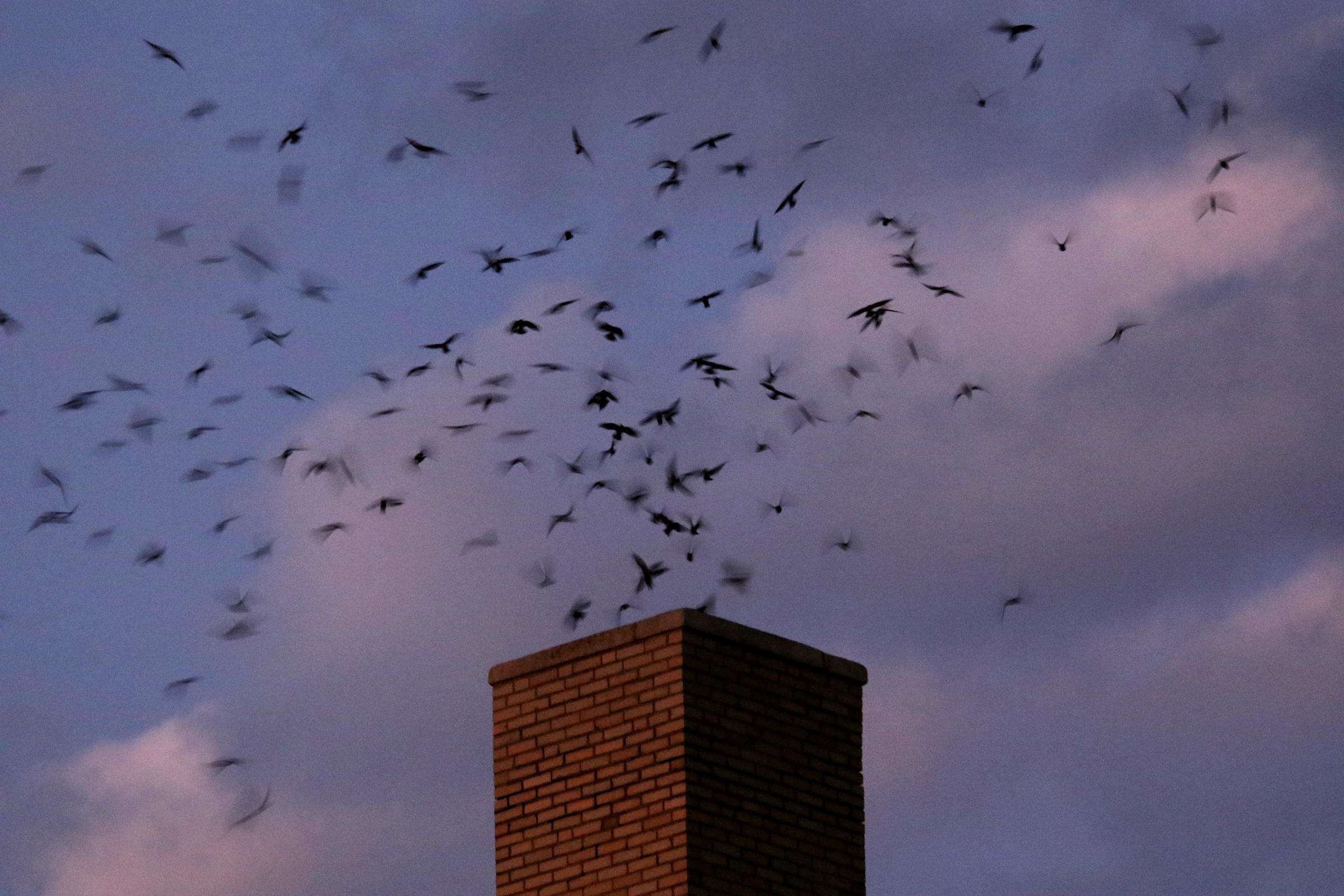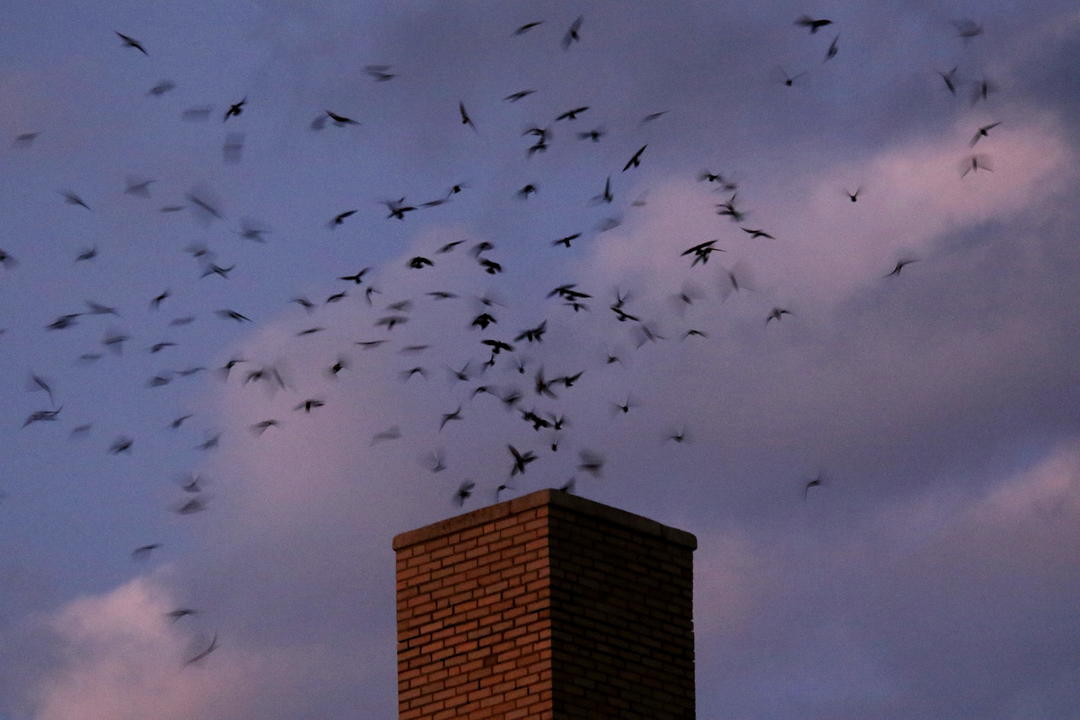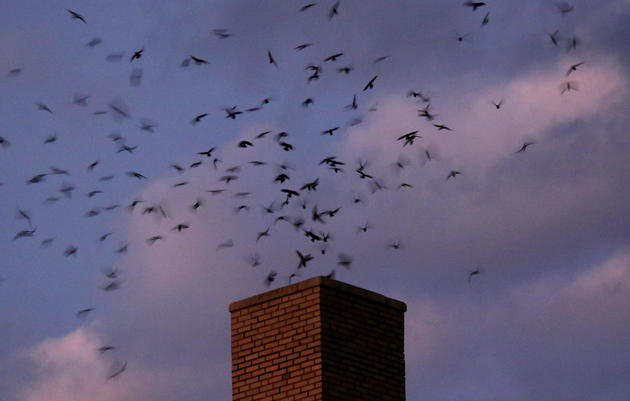Chimney Swift Observers:
Audubon Vermont is working again with Vermont Fish and Wildlife to survey for Chimney Swifts this spring and summer. Thank you to everyone who submitted sightings last year – we had over 300 reports of Chimney Swifts throughout the state!
This summer’s survey is focused on identifying critical nesting and roosting habitats. Please submit any sightings you have, but more importantly, we would appreciate any reports of where birds are entering chimneys or other structures in the various towns and cities.
Nesting vs. Roosting?
Nesting sites refer to the places where a bird chooses to build her nest and raise her young. Chimney Swifts begin nesting in May and can continue into August. Chimney Swift nests are a half-saucer shape and made of twigs glued together with the adults' saliva. The adults break off short dead twigs for the nest while flying by. Chimney Swifts usually raise a single brood, and there will be only one active nest in any structure regardless of the size of the site. The nest is a young bird's first home, but certianly not it's last. It is dangerous for birds to take up residency in one area for too long. Come August, most nesting birds in the Northeast will abandon their nest and begin roosting instead.
Roosting sites refer to the places birds seek shelter after a long day of foraging and hunting. Birds look for a safe, secretive place to spend the night out of sight from predators. Many birds choose to roost on the branch of a tree huddled together like Tree Sparrows or Turkeys. Chimney Swifts will congregate in flocks of hundreds and even thousands at suitable roost sites starting in August. Although Chimney Swifts can withstand a few early cool snaps, they will usually ride south on the first major cold-front that blows through in the fall.
Swifts migrate during the daytime. In the late summer in Vermont, each evening during migration swifts seek a safe, communal night-roost. Before chimneys were available on the landscape, swifts used standing hollow dead trees that were once much more abundant in forests. Now, chimneys have become a critical component of the swifts’ migration.
Known or possible roosting sites in Burlington:
Chimney Swifts entering roosting site in Arkansas
Submitting Observations
Please submit your observations to eBird. If you are new to eBird, visit: 10 Easy Steps for Submitting Your Chimney Swift Observations to eBird. If you already have an eBird account and submit sightings regularly, just make sure you share your sightings with the project named “CHSW_Survey.”
When to Monitor
Late May-Early July: Chimney Swifts are nesting
Mid to late July: Chimney Swifts are roosting
August: Migration to South America begins and swifts are communally roosting each night.
The best time of day to observe Chimney Swifts is in the late evening/dusk. Take an evening stroll in your neighborhood or favorite swift sighting area with your binoculars and count the number and location where you see and hear the birds. If possible, follow the birds until they enter into a chimney or structure and report the location of the structure.
Thank you! Enjoy your evenings out and about looking for these wonderful birds. For more information on how to identify Chimney Swifts by sight and sound visit the Audubon Field Guide or Cornell's Lab of Ornithology 'All About Birds" guide.
Related
How you can help, right now
Donate to Audubon
Help secure a future for birds at risk from climate change, habitat loss and other threats. Your support will power our science, education, advocacy and on-the-ground conservation efforts.
Visit Audubon
It's always a good time to visit the Audubon Center. Trails are open to the public year-round. Visit us daily from dawn until dusk! Donations are appreciated.
Events
Adults, preschoolers, foresters, photographers, sugarmakers and families will all find opportunities to connect with nature.






